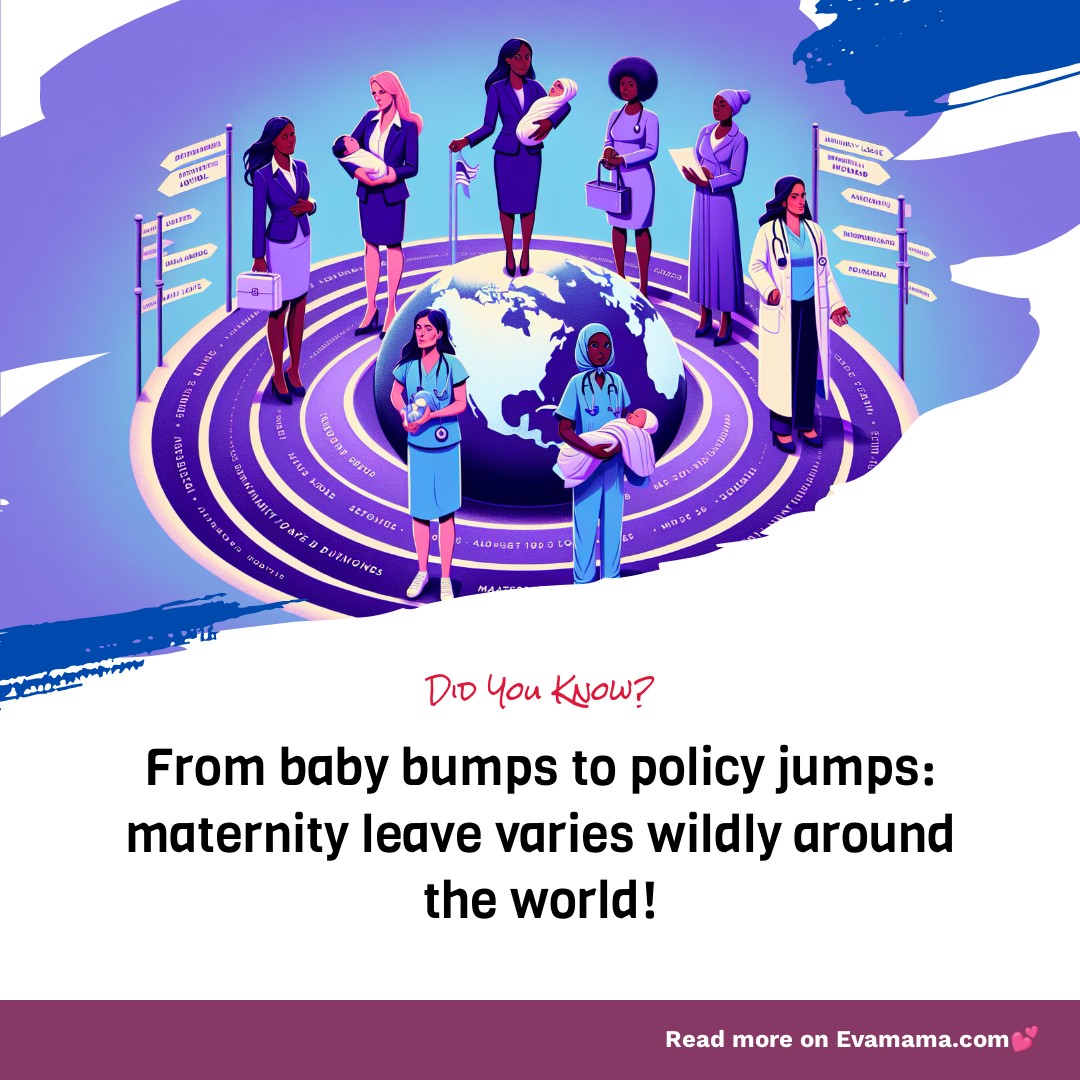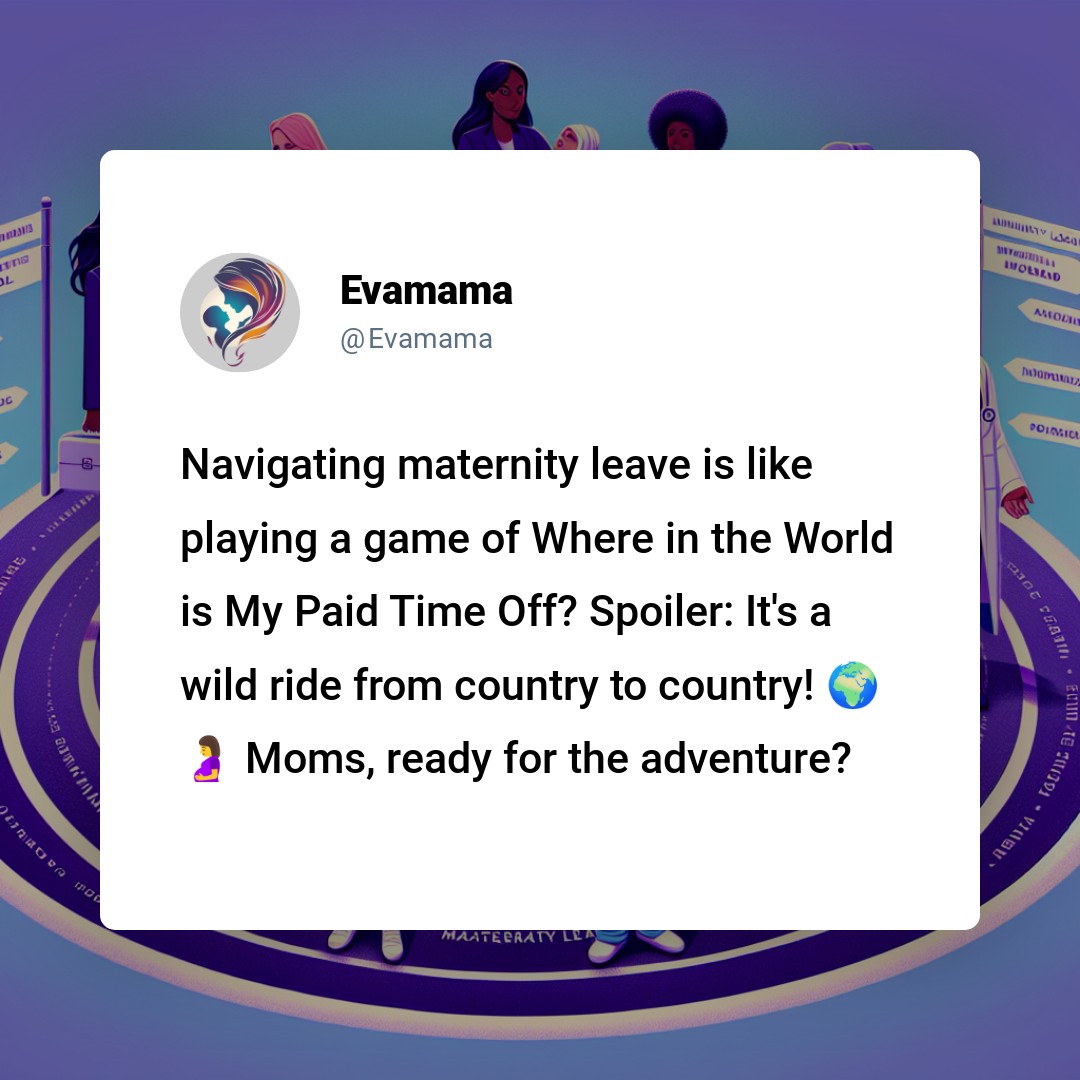Navigating Maternity Leave Globally: A Guide for Moms to Compare
Navigating maternity leave globally is a complex maze. Imagine you’re preparing for the most significant role of your life—motherhood—but the rules of the game are different in every country. It’s like trying to piece together a jigsaw puzzle of international laws and policies, each piece a different shape and size.
That first breath of your newborn is a moment of pure joy, yet the labyrinth of maternity leave rights worldwide can dampen the excitement. As a seasoned guide through the intricate world of SEO and content, I’ve seen the confusion and heard the collective sighs of expectant mothers trying to make sense of it all.
Let’s unravel this tapestry together, weaving clarity into the fabric of maternity leave standards. I’ll share insights that light the path for you, drawing from the collective wisdom of mothers around the globe. Here’s to empowering you with knowledge as you embark on this beautiful journey.

What Are Global Maternity Leave Standards?

Embarking on the journey of motherhood is an exhilarating time, and understanding your maternity leave rights can be just as critical as preparing the nursery. Around the globe, maternity leave policies vary widely, and it’s critical to know where your country stands on the spectrum.
The Generosity Spectrum: Maternity Leave Around the World
Scandinavian Support: A Model of Generosity
In the Nordic countries, maternity leave is synonymous with support and generosity. For instance, Sweden offers 480 days of parental leave, which can be shared between both parents, and 80% of your salary is paid for the first 390 days. This approach not only supports the mother’s recovery and bonding time with the baby but also promotes gender equality in child-rearing.
United States: The Outlier in Maternity Leave
Conversely, the United States is the only industrialized nation without a federal paid maternity leave policy. The Family and Medical Leave Act (FMLA) provides 12 weeks of unpaid leave, but this only applies if you work for a company with 50 or more employees and have been there for at least a year. This leaves many new moms facing a tough decision between their newborn and their financial stability.
Compensation Rates: How Much Will You Receive?
Full Pay to Fractional Pay: A Global Glance
Countries like the UK offer up to 39 weeks of paid leave, with the first 6 weeks at 90% of your average weekly earnings and the remaining 33 weeks at a fixed rate or 90% of your earnings, whichever is lower. In contrast, countries like Japan offer 14 weeks at two-thirds of your salary, showcasing the global disparity in compensation rates.
Eligibility Requirements: Who Qualifies for Maternity Leave?
Inclusive Policies vs. Restrictive Criteria
Eligibility requirements can be as diverse as the countries themselves. In Canada, you need to have worked 600 insured hours in the year before you claim maternity leave. In Brazil, it’s a matter of having contributed to social security for at least 10 months before the birth. These varying requirements reflect each country’s approach to social welfare and labor rights.
The Role of International Organizations
ILO Standards: A Benchmark for Maternity Leave
The International Labour Organization (ILO) sets the minimum standard at 14 weeks of maternity leave, but only 34% of countries meet or exceed this recommendation. The ILO also advocates for at least two-thirds of earnings to be paid during this period, aiming to protect the health of the mother and child without causing financial hardship.
A Comparative Table of Maternity Leave Policies
| Country | Duration of Leave | Compensation Rate | Eligibility Requirements |
|---|---|---|---|
| Sweden | 480 days | 80% (first 390) | None specified |
| United Kingdom | 39 weeks | 90% / Fixed rate | Continuous employment |
| United States | 12 weeks | Unpaid | Company size & tenure |
| Japan | 14 weeks | 67% | Employment insurance |
| Canada | Up to 18 months | Varies | 600 insured hours |
As you navigate the complex landscape of maternity leave, Most importantly that knowledge is power. Understanding your country’s policies empowers you to plan effectively for your growing family. Whether you’re in a country that celebrates new mothers with ample time off and financial support or in a place where the policies are less favorable, being informed helps you advocate for yourself and make the best decisions for your family.
Navigating Maternity Leave Globally: A Comparative Look

The Balancing Act: Job vs. Income Protection During Maternity Leave
You’re about to plunge into one of life’s most beautiful journeys-motherhood. But amidst the joy, you face a critical decision: taking maternity leave. It’s a delicate balance, protecting your job while ensuring you have the income to care for your new bundle of joy. Countries worldwide approach this differently. In Sweden, for example, parents are entitled to 480 days of paid parental leave, which can be shared between both parents. This not only secures the mother’s job but also provides substantial income protection.
The Financial Strain of Unpaid Leave: A Global Dilemma
Imagine you’re ready to take maternity leave, only to find out it’s unpaid. This is a stark reality for many. In the United States, the Family and Medical Leave Act (FMLA) guarantees 12 weeks of unpaid leave, which can cause significant financial stress. Contrast this with Canada’s Employment Insurance program, offering up to 15 weeks of paid maternity leave, highlighting the disparities in global maternity leave policies.
Paid Leave: Of the essence for Well-being and Work-Life Balance
Paid maternity leave isn’t just a financial necessity; it’s needed for your well-being and the ability to balance work and family life. Studies, like those from the Organization for Economic Cooperation and Development (OECD), show that paid leave contributes to better health outcomes for both mother and child. It’s a time for bonding, recovery, and adjustment to a new family dynamic.
Talent Retention and Employee Benefits: A Global HR Perspective
As a global HR team, retaining top talent while navigating diverse maternity leave mandates is a complex task. In countries like Germany, where maternity leave is well-supported, companies often see higher retention rates. This is because employees feel valued and supported, making them more likely to return to work post-leave.
Compliance with Leave Mandates: A Challenge for Multinational Companies
For multinational companies, compliance with varying maternity leave laws can be a labyrinth. In the European Union, directives ensure a minimum of 14 weeks of maternity leave, but each member state can offer more generous terms. Global HR teams must be well-versed in these laws to avoid legal pitfalls and ensure fair treatment of employees.
Support Systems for New Mothers: Beyond Basic Leave
Beyond the basics of maternity leave, what support systems are available for you as a new mother? Some countries offer supplemental parental leave, like Australia’s “Dad and Partner Pay,” providing two weeks of government-funded pay. Full benefits packages may include flexible working arrangements, childcare support, and wellness programs, all designed to help you transition back to work smoothly.
Making Informed Decisions: Understanding Your Maternity Leave Options
Knowledge is power, especially when it comes to maternity leave. By understanding the policies in your country, you can make informed decisions about your leave and return to work. For instance, in the UK, you’re entitled to up to 52 weeks of maternity leave, 39 of which are paid, allowing you to plan your leave duration according to your personal and financial needs.
Global Maternity Leave Policies: A Table of Comparison
| Country | Length of Leave | Paid/Unpaid | Job Protection |
|---|---|---|---|
| Sweden | Up to 480 days | Paid | Yes |
| United States | Up to 12 weeks | Unpaid | Yes |
| Canada | Up to 15 weeks | Paid | Yes |
| Germany | Up to 14 weeks | Paid | Yes |
| Australia | Up to 18 weeks | Paid | Yes |
| UK | Up to 52 weeks | Partially Paid | Yes |
This table gives you a snapshot of how different countries support new mothers, but The nuances of each policy can have a profound impact on your maternity leave experience.
Navigating maternity leave globally is a complex but of the essence aspect of modern motherhood. By understanding the balance between job and income protection, the implications of unpaid leave, and the importance of paid leave for well-being, you can make choices that best support you and your family. .






